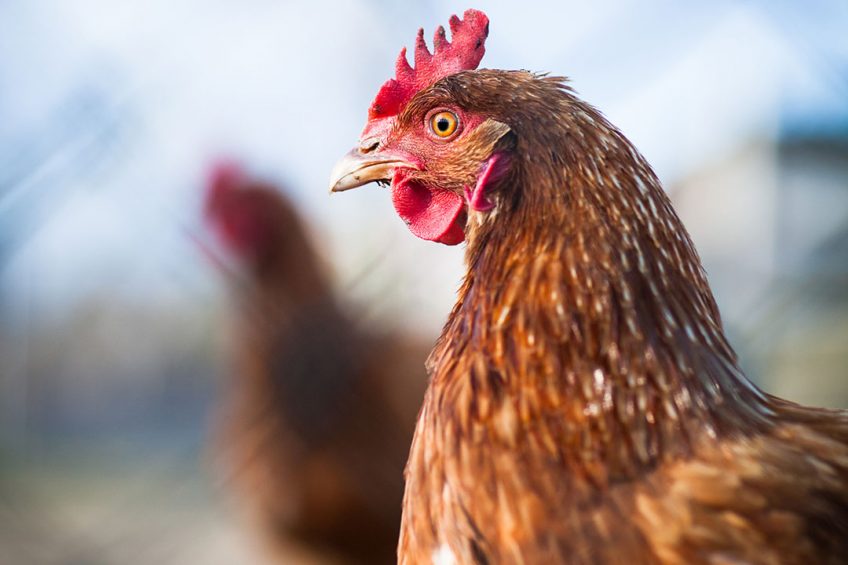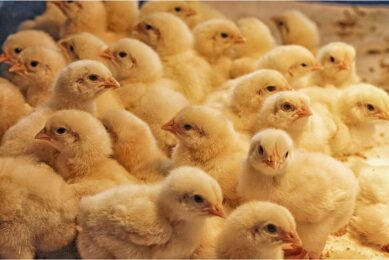Probiotics as a potential control for avian intestinal spirochaetosis

Brachyspira is a bacterium that causes a disease known as avian intestinal spirochaetosis in poultry, primarily in laying hens and broiler breeders.
Avian intestinal spirochaetosis (AIS) is a gastrointestinal disease which is estimated to cost the UK laying industry £18 million a year, resulting from reduced egg production and poor egg quality. Brachyspira is present in up to 91% of free-range hens, 85% of organic free-range hens and 76% of caged flocks and therefore has a significant impact on the UK laying industry.
This prevalence is thought to be similar worldwide, with similar patterns identified in Europe, Australia and Asia.
Due to a lack of understanding of the biology of Brachyspira, to date, interventions and strategies to reduce the incidence of this organism in flocks have been largely unsuccessful and recent efforts have primarily focused on researching preventative measures in flocks.
Probiotics
Preventative measures, such as the use of probiotic bacteria, for example Lactobacillus, are increasing in popularity as they are easily administered to poultry in feed or water supplies.
Probiotics work on the principle that when provided in adequate quantities, they can confer health benefits on the host and that good gut health can afford some protection from bacteria such as Brachyspira.
Therefore, the overarching aim of this PhD project was to investigate Lactobacillus probiotics as an intervention against Brachyspira and to determine the possible mechanisms of Brachyspira inhibition by Lactobacillus. This was achieved in several different ways. Firstly, Brachyspira strains isolated from infected hens in the UK were identified and characterised. Additionally, Lactobacillus strains were isolated from the faeces of healthy laying hens and were also identified and characterised in line with European (EFSA) probiotics guidelines.
Take a look at the Poultry World health tool to find out the latest information on poultry diseases
Next Stage
Once suitable strains of Brachyspira and Lactobacillus were selected, the next stage was to explore the ability of these Lactobacillus strains to inhibit all Brachyspira species known to infect poultry. Several mechanisms of inhibition were investigated such as production of inhibitory metabolites by the Lactobacillus, physical interactions between these bacteria and interactions with immune cells both in tissue culture and in an insect infection model.
Overall, it was evident that the Lactobacillus strains characterised in these studies were inhibitory against all species of Brachyspira and therefore show promise as potential probiotics. The mechanisms by which they inhibited Brachyspira were multifactorial, and thus it would be important to design a probiotic formulation consisting of multiple Lactobacillus strains.
Lactobacillus reuteri and Lactobacillus salivarius, the most common species of Lactobacillus found in the gastrointestinal tract of chickens and used in several probiotic products, were the most promising probiotic candidates of those tested in this study. These strains were able to inhibit Brachyspira in several different ways including:
- producing inhibitory metabolites such as lactic acid and bacteriocins
- physically interacting with Brachyspira
- altering innate immune responses to Brachyspira.
Each of these mechanisms are important when considering the inhibition of Brachyspira. Firstly, the production of inhibitory metabolite such as lactic acid is important because lactic acid induces a stress response in Brachyspira due to a lowered pH. This response results in these long, motile bacteria curling into a ball know as a spherical body therefore impairing their motility and ability to adhere and invade the cells of the gastrointestinal tract.
Inhibitory
Interestingly, the Lactobacillus isolates that were most inhibitory against Brachyspira also utilised the highest concentrations of glucose. This could be advantageous in the avian gut because this glucose utilisation would result in lower glucose concentrations for utilisation by pathogenic bacteria such as Brachyspira. Physical interactions between Lactobacillus and Brachyspira also impair the motility of Brachyspira and reduces its ability to cause disease.
Finally, Lactobacillus were able to alter the immune responses in avian macrophage cells and insect haemocyte cells in response to Brachyspira, which may indicate that Lactobacillus mediates inflammatory responses to reduce the severity of infection in poultry.
In conclusion, this project highlights the promise of Lactobacillus probiotics as a suitable intervention against the ever-growing health and economic burden associated with Brachyspira infection. Several mechanisms are associated with Lactobacillus inhibition of Brachyspira and therefore, multi-strain probiotic formulations should be further investigated as a potential control strategy for avian intestinal spirochaetosis.
 Beheer
Beheer











 WP Admin
WP Admin  Bewerk bericht
Bewerk bericht